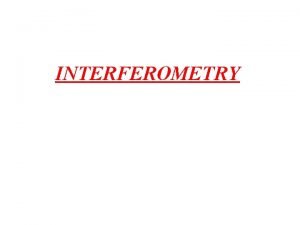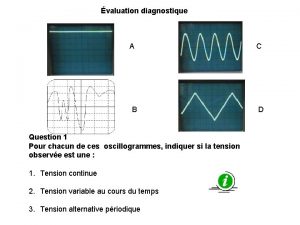Reduction of NPL in Europe chacun pour soi





























- Slides: 29

Reduction of NPL in Europe: “chacun pour soi” within a weak European strategy. CFA seminar Milan, 14 March 2018

Despite significant progress in the cleansing up of banks balance sheets in recent years, still an elephant in the room • • • Post-crisis deterioration of banks’ loan portfolios in advanced countries US bad loans/total loans ratio peaks 2009 5% then declined – in Europe it kept rising until begining 2016, then declined: June 2016 5. 4%; June 2017: 4, 6%). Almost EUR 1 Trillion (gross terms), provisioning ration 50, 8%, almost 10% of the area’s GDP. Intra-EU uneven distribution of the problem: Italy/Portugal values (net exposures) 4 x Euro average; Cyprus/Greece 10 x Euro average. > 10% EU St. ratios > 10% (EBA). National differences depend also on legal/judiciary system: recovery rates and recovery process: 10% difference in provisioning depending on duration of court proceedings (EBA). Significant dispersion: for large banks the NPL ratio is below 4% whereas for smaller banks it is approximately 25%.

This is the elephant’s trunk!

NPLs mirror regional imbalances in general macroeconomic conditions within the EU: a big dispersion • Country-specific figures reveal what the European Union (EU) average hides: a significant dispersion in NPLs levels. The trunk is most visible in Italy, which has a stock of 280 billion EUR in gross NPEs and 133 billion EUR in net NPEs. In relative terms, the following figure shows that Portugal and Italy have net exposure values four times the European average, with Cyprus and Greece almost 10 times the European average, another very sizeable trunk.

National dispersion

Average coverage • The following figure illustrates the average coverage ratio (i. e. , the amount of provisioning made against the stock of gross NPLs) by national banking systems. Country-by-country differences in coverage ratios are also a function of the relative strength of each country’s judiciary system, which affects recovery rates and the length of the recovery process. There is a 10% difference in provisioning levels depending on the length of court proceedings.

Average coverage

A strategic decision – making matrix for AMC compiled based upon several past experiences Source: Medina Cas Irena Peresa What Makes a Good ‘Bad Bank’? September 2016 CHOICE Advantages Disadvantages Decentralised / Centralised Banks better placed to resolve NPLs - Econ. of scale - Specialization (different skills) -Skills do not adjust Ownership: Private /Public Efficient management - Larger resources restore confidence - Banks’ loss - Mistrust - Taxpayer loss Asset transfer: large one-off, small&gradual -Removes risk, restarts lending -Trims non-core activities Ability to calibrate and manage supply and demand -Flooding the market, depressing prices - Risk further deterioration Funding: Deposit, senior debt / sub. debt, equity - Access CB funding -Cushion builds confidence - Banking license & cap. requirem. - No sub. funding, no confidence -Risk of not finding market Governance & incentives: public/private -Accountability -Professionalism -Rigidity, lack of expertise -Wrong incentives running loose (again) - Link lenderborrower (toxic) Loss of direct, qualitative information - Political meddling

Strategic decision – making matrix (II) • Right/Wrong… or consistent choices? CHOICE Decentralised / Centralised KEY - Ownership: Private /Public Asset transfer: large one-off, small&gradual - Funding: Deposits, senior debt / sub. debt, equity - Governance & incentives: public/private - - OTHER ASPECTS Is the problem restricted? What asset management is needed (liquidation/renewal)? - Legal system: enforcement Hybrid funding Institutional independence - Transparency and accountability Supervisory regime How urgent is to restart lending? Can banks discriminate between assets? How much haircut? - Legal system: enforcement Stress tests How much equity/subord. debt can be absorbed… by whom? Does the public think as ‘citizens’, or ‘investors’? - Investor protection Stress tests / haircuts Correct staff policies Strategy (maximization, social goals…) - Transparency and accountability Legal system: enforcement -

Irish, Spanish, German (hard) choices… Right/wrong, or consistent? CHOICE IRELAND SPAIN GERMANY Decentralised / Centralised Decentralised – Single-purpose Ownership: Private / Public 51% - 49% (NAMA SPV, NAMA has veto power) 55% - 45% (14 nat. banks, 2 foreign, insur, 1 utility) - FROB 100% public (So. FFin – Market Stabilization Fund) Asset transfer: large one-off, small&gradual - Large, one-off (loan minimum thresholds) 57% hct Two-stages, variety of assets (important quantity of large loans to property developers), 52, 7% hct Large, one-off, variety of assets, book value transfer Funding: Deposits, senior debt / sub. debt, equity - St-guar senior bonds EUR 30 bill Subordinated bonds EUR 1, 6 bill Equity 100 mill - St. -guar. senior debt EUR 50, 8 bill - Sub. Debt EUR 3, 6 bill - Equity 1, 2 bill (wiped out) Conversion Government bonds replaced by own funding… with government guarantee Governance & incentives: public/private - Independent Debt reduction + fund delivery residential housing - - Executive + supervisory board + supervision by FMSA - Divestment plan (10 years) - - Indep – sharehs. + Bd. E supervision Divestment 15 yrs (taking long) + affordable housing (local govs)

A few examples of past experiences: (I) Ireland. NAMA

NAMA transfers • • • Assets acquired at long-term economic value of the loan (LEVL). Acquisition price = Nom value - discount (=Mkt value collateral property + legal difficulties). State guarantees and asset transfers State-aid compatible, the remuneration of the State was embedded in the purchase price, with a 170 bp margin being added to the Irish government bond yield for the relevant maturity used to discount the assets' expected long-term cash flows.

Past experiences (II). Germany. FMSA • In Germany the problem was identified with the Finanzmaktstabilisierungsfondgesetz of October 2008 and in particular with its extension of 2009. Article 8(a) granted to an agency for financial stabilization (FMSA) and related fund (So. FFin) the possibility to set up specialised agencies for the acquisition and management of NPEs: 1) Erste Abwicklungsanstalt (EAA) for the West. LB non performing assets (December 2009); 2) FMS Wertmanagement called to manage NPLs of Hypo Real Estate Holding (July 2010). • Both agencies were backed by a guarantee of So. FFin, which in turn is backed by the guarantee of the state (regional state Hamburg for HSH Nordbank; federal state for West. LB and HRE, but backed in turn by Nord. Rhein Westfalen and Savings Association respectively). NPEs were transferred via division (Betriebsabspalrtung) to the bad banks at their book value (IFRS not applicable because bad banks are not licensed banks!). • The schemes were deemed compatible with State aid rules becauset (i) a clear functional and organizational separation was traced between the beneficiary bank and the assets, and (ii) the haircut and claw back clauses applied in setting the transfer price actually made the banks recognize losses.

Past experiences: (III) Spain. SAREB • Spain established an asset management company (AMC) called SAREB to manage NPLs (condition of the Mo. U signed in July 2012 with the European Commission). • Transfers should take place at the real (long-term) economic value (REV) of the assets, in exchange for a “suitably small” equity participation in the AMC. • Bonds issued by the AMC had to be eligible for ECB refinancing and guaranteed by the State or cash and/or high quality securities. The AMC had to be given the “possibility to hold [problematic assets] to maturity”. • The Commission found the asset transfer in line with State aid rules, due to its being based on the estimated long-term real economic value of the assets and the application of a discount (account for AMC and negative outlook on divestment of the assets in the short-run).

Italy – The reluctant chooser: Strategies I and II • Italy caught unaware: late slowdown (2011), and deterioration of bank assets (2013). Result? End 2016: Italian NPEs = 349 Billion (gross terms), 173 Billion (net terms) (9. 4% of loans). Qualified NPEs: 81 Billion (4. 4% total loans). • Step 1. First strategy: REV Bad Bank –Resolution scheme for 4 mid-size banks (1% deposits), Law Decree 183/2015 –NPLs EUR 8, 5 Billion transferred to REV - Gestione Crediti S. p. A, (EUR 136 Mill capital subscribed by national resolution fund): Consideration: 17, 65% gross value later adjusted to 22, 3% (EUR 1, 5 – 1, 9 billion) • Step 2. Second strategy: GACS –State guarantee over senior securities issued by NPL-acquiring SPVs. –Conditions: (i) NPL transfer price < net book value (ii) SPV issues at least two tranches (junior, senior); (iii) only senior guarantee-eligible; (iv) servicing outsourced –Avoiding State-aid: non-State parties’ acquisition of junior/mezzanine tranche + market pricing of guarantee

Italy : GACS in practice • Which ‘non-State party’ could acquire junior/mezzanine tranches? Fondo Atlante (Atlas fund): • Good name! • But to small to be Atlas!

Italy – strategy III: how to address judicial reform? Duration of enforcement proceedings and weaknesses of admitted credit guarantees. Strength of Legal Rights Index (OECD countries) Source: E. Brodi, Banca d’Italia, Il sistema delle garanzie: la ratio economica della nuova regolamentazione, Milan, 14 March 2017.

Italy : Strategy III • Step 3: Third stategy. Tackling judicial inefficiency • Mortgage enforcement: 4. 2 years (peaks 8 years) / Bankruptcy: 7, 6 years Enter Law Decree n. 59 of 2016 - Law No 119/16 • Out-of-court ownership transfer “patto Marciano” after delinquency • Broader use of security (pledge without dispossession) • Public register on all relevant judicial data on recovery proceedings • Not everything is for banks: improvement of 2016 Stability Law-Law No 208/2015 reimbursement scheme for mis-selling of subordinated bonds to retail investors by 4 banks (Step 1)

Italy: a vindication of history as Strategy IV. SGA and Banco di Napoli NPLs Step 4: Fourth strategy: Banco di Napoli bail-out: - NPLs (37. 000 loans) transferred to SGA at net book value in 1996 (too optimistic) - BUT: Dec. 2015: SGA recovered 90, 1% of NPLs’ net value (> 50% gross value), in line with historical recovery ratios (2006/2015: recovery ratios in line with net book value (41%) Banca d’Italia, Note di stabilità finanziaria e vigilanza, n. 7, 2017) - 2016. SGA’s capital (and >500 mill liquidity) transferred to Ministry of Economy

Italy: Strategies V and VI • Step 5: Fifth strategy. Liquidity/solvency support L. Dec. 237/2016 – State guarantee on new and senior bonds for (still) solvent banks (to be approved by EC); – Conditions to inject public funds into capital of banks still solvent but with capital shortfall in stress test Burden-sharing and conversion of subordinated debt. • Step 6: Sixth Strategy. MPS securitization and similar schemes – Division of NPLs through securitization from MPs to SPV – SPV issues 3 tranches: senior (with St-guarantee), mezzanine); junior (also allocated to shareholders) – Similar schemes for ‘shadow resolutions’ of mid-size banks by Italian DGS (Cassa di Cesena, Cassa di Rimini, Cassa di San Miniato)

Italy –The reluctant chooser: the perils of Hamlet’s Indecision. . . • The Italian approach… to be or not to be – Mix of centralized/decentralized, broad-purpose/single-purpose, public-private – Lack of one shot, comprehensive solution piecemeal approaches do not fully fit • The costs of Hamlet’s indecision: staring into Yorik’s skull – Italy: a country of deposits (59% of median funding)… bank panic would be fatal Source: AIAF, CFA Society Italy, BRRD e Bail-in. Implicazioni per l’analisi del settore finanziario e la tutela dell’investitore, 2017, p. 63.

What if? The alternative of a comprehensive Italian Bad Bank SPV • A comprehensive Italian Bad Bank SPV: Visually… Not so bad. • The estimate of Lusignani/Onado/Bruno led to the following results: Source: B. Bruno, G. Lusignani, M. Onado, ‘A securitisation scheme for resolving Europe’s problem loans’, forthcoming

The numbers of the counterfactual • Possible response, then? Securitizing ALL Italian banks bad debts (NPEs) – – – • Nationwide SPV Asset-side: loans with 51, 4% recovery rate, 15% volatility Asset-side (I): Liability-side: 3 tranches (67% senior, 18% mezzanine, 15% junior) State guarantee for senior tranche (with investment grade rating) Possible response? The keys – Sale at 28. 1% of gross book value (EUR 55, 6 billion): EUR 28, 1 billion (EUR 20, 5 billion after-tax) loss Impacts Core Equity Tough but not impossible / If sale at 33% EUR 13, 3 billion loss – In numbers: EUR 13 -20 billion loss; EUR 8 -18 billion junior tranche – Mezzanine investors: reasonable prospect to get back principal after 8 years • Possible response… and its elephant – … But… who could buy the mezzanine and junior tranches?

…and the plan to allocate SPV notes in the counterfactual • A plan to distribute the junior and mezzanine tranches – If market responses sufficient, the exercise would go on smoothly – If not, perhaps all DGS- affiliated banks could be called to subscribe SPV junior and mezzanine securities in proportion to participation on DGS (size-and-risk sensitive). – Possibility to pay with sovereign bonds held in treasury? Sovereign bonds used by SPV to pay NPLs and by transferors for central bank refinancing. • BUT with adjustments to avoid moral hazard (deposits’ super-senior rank) – part of subordinated bonds held by institutional investors in each bank joining the scheme should be called to be exchanged with junior tranches; and – Retention by bank transferring NPLs to SPV of junior or super-junior tranche (510%) as skin-in-the-game.

How would an Italian Nationwide SPV fit into the strategic matrix • A strategic comparison CHOICE CURRENT SOLUTIONS PROPOSAL Decentralised / Centralised fund, singlepurpose transactions Centralised Ownership: Private / Public Private + public funds intervention in haphazard manner Private + state support along defined lines Asset transfer: large one-off, small&gradual Large, but transaction-bytransaction Large, one-off Funding: Deposits, senior debt / sub. debt, equity Combined without clear overall strategy Senior, mezzanine, junior along established lines Governance & incentives: public/private Unclear To be defined

How would TFEU state aids rules fit into the scheme? • State-aid (I): General aspects – Voluntary scheme: unproblematic – Mandatory scheme (I). C-379/98 Preussen. Elektra legal mandate does not render measure invalid State-aid – Mandatory scheme (II). Scheme not selective (open to all banks), nor distortive + banks join in econ. terms aligned with investment choices in market economy – Mandatory scheme (III). Different from T-196/16 Tercas: where only return for DGS support was avoidance of bigger disbursement in payment of covered deposits. • State aid (II): Complying with Comm. 2009 on Impaired Assets: i. iii. iv. • Burden sharing ensured via junior and mezzanine securities; Eligibility, valuation and pricing of assets fairly warranted; SPV’s long-term management of impaired assets efficiently ensured; Removal of risks from beneficiary banks: necessary step to ensure credibility to prepare a “solid ground for return to long term viability”. The remaining homework: the market or the Dec. 2016 state support scheme should raise EUR 15 Billion of new capital.

Some good might come out of this… A blueprint for Europe? • One of us estimated that a Euro system AMC would need to acquire bad loans at a disposal value of around 173 Billion, with a gross disposal loss for the transferor banks of about 70 Billion (51 net of tax). This would make our proposal viable also at European level, allocating, all else being equal to the Italian exercise, a senior note of 116 Billion, a mezzanine note of 31 Billion and junior notes for 26 Billion. Net loss on disposal in the Euro area for the main 11 countries (June 2016) Source: B. Bruno, G. Lusignani, M. Onado, ‘A securitisation scheme for resolving Europe’s problem loans’, forthcoming, p. . .

But European strategy so far different! “Chacun pour soi” and piecemeal approach • Council action plan 11 July 2017: A. EU reform of debt recovery frameworks (like Italian strategy 3); B. development of secondary markets for NPLs (like Italian strategy 3); C. fostering restructuring of the banking system (easier said than accomplished, in particular for non SIFIs) • Commission Communication 11 October 2017 on completion of the Banking Union: a comprehesive package by Spring 2018 on: A. a Blueprint for how national AMCs can be set up B. measures to develop secondary markets for NPLs C. measures to enhance protection of secured creditors • First Progress Report on Reduction of NPLs in Europe: 18. 1. 2018

Concluding remarks and questions • US-EU comparisons… or economics v. Politics (or. . . federal state vs national states). Being united would help in finding the resources to recapitalise, in better disseminating risk (via notes) throughout entire Union, in better reconciling state aids rules with their true finality. • Choices can differ… but need to be consistent, and based on clear answers to clear questions. They must be timely. Italy was? Europe was? • Italy? if you do not like the fancy answer…try a different question… until questions are exhausted • Italy (II)? there is still hope… and maybe even a blueprint for Europe • But is Europe a Union with mutual bonds of trust and solidarity or just a single market for goods and services?
 Il faut exiger de chacun ce que chacun peut donner
Il faut exiger de chacun ce que chacun peut donner Classe en soi et classe pour soi
Classe en soi et classe pour soi Classe en soi et classe pour soi
Classe en soi et classe pour soi Stratification sociale
Stratification sociale Agir moralement
Agir moralement Toi et moi basel
Toi et moi basel Npl certificate in educational leadership
Npl certificate in educational leadership Npl directive
Npl directive Npl netball
Npl netball Pitter npl gauge interferometer
Pitter npl gauge interferometer Soi sensor
Soi sensor Rentrer chez dieu comme on rentre chez soi
Rentrer chez dieu comme on rentre chez soi Tinthac
Tinthac Soi sáng
Soi sáng Tc-soi
Tc-soi La fleur de l'estime de soi
La fleur de l'estime de soi Voi kéo gỗ như thế nào
Voi kéo gỗ như thế nào Projektowanie filtrów fir
Projektowanie filtrów fir Soi sáng
Soi sáng Soi vs bulk
Soi vs bulk Cmos soi
Cmos soi Modelo soi
Modelo soi Mdias
Mdias Piparin tuoksua tonttujen juoksua nuotit
Piparin tuoksua tonttujen juoksua nuotit échelle des standards personnels de frost
échelle des standards personnels de frost Balance décisionnelle tcc
Balance décisionnelle tcc Smart cut soi
Smart cut soi Con hợp với thiên thần hòa vang câu hát
Con hợp với thiên thần hòa vang câu hát Abhay soi
Abhay soi Soi sáng
Soi sáng




















































